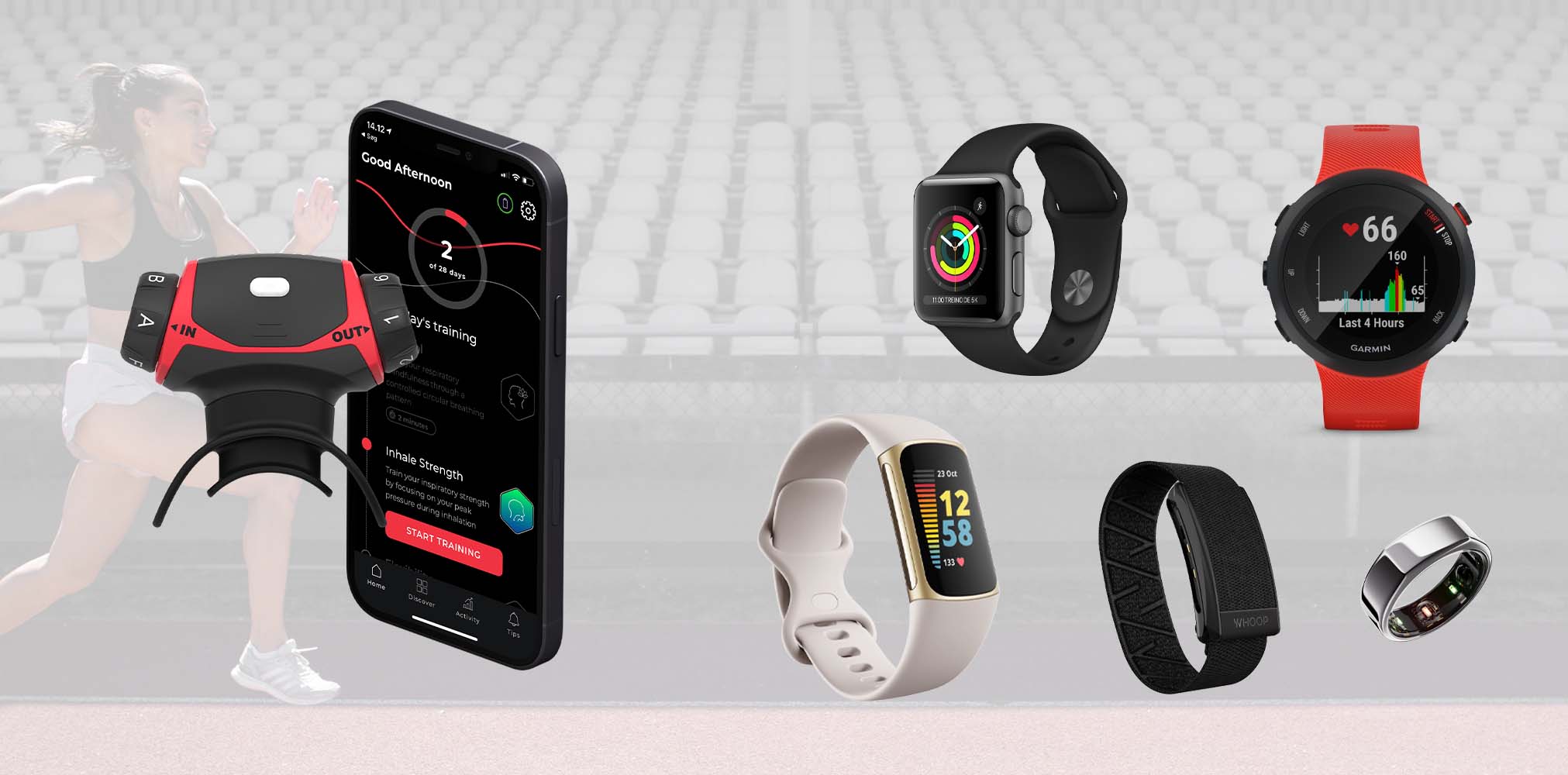Breath training and data from wearables – can we change the metrics through breathing?

Author: Jacob Mathiesen, Head of Marketing and Sales at Airofit
Over the past decades, we have seen numerous technical innovations becoming part of our everyday lives. We wear around our wrists, on our waists, on our fingers and carry in our pockets. We track more and more data points about the state of our body, mind, sleep, performance, etc.
But what do we do with these data points? How do we change these and start actually improving them?
We all love gadgets, especially gadgets that show us that we have done well, and the data gives a dopamine kick. Whether through a GPS tracker on our bike stating we have biked faster than 30 km/h or a step tracker acknowledging that we have walked more than 10,000 steps today.
Today these data points go deeper, and they tell us what our sleep score is or whether our blood oxygen level is too low. The possibilities are endless, but we are often presented with vague suggestions when it comes to changing these metrics for the better.
- Sleep more hours
- Drink less alcohol
- Take a break from what you are doing because you are showing signs of fatigue
These suggestions are well-meant but not always easy to adapt to in an ever-busier day with a job, kids, house, friends and family.
Then the data start to become de-motivating as we can not find room to push in 2 more hours of sleep per day as suggested by our suddenly change our diet overnight.
However, there are a few easy ways to change metrics that show your overall physical and mental health state.
Breath training is one of them and often an overlooked and underestimated powerful resource that is linked to the mental and physical state of our body. Breath training is often referred to by RMT (respiratory muscle training) or IMT (inspiratory muscle training). There are quite a lot of studies out there showing the real benefits of RMT. And it is not only people who have asthma or elite athletes who can benefit from RMT. Breathing training is for everyone:
- Physical exercise feels easier as you never feel out of breath
- Sleep quality improves
- Overall energy levels increase
- Mental strain seems to lift
- Recovery from COVID or pneumonia becomes easier (actually recognized by WHO)

Apple Watch: Sleep score before and after 3 weeks of RMT
Then there are the high-performing athletes looking for the marginal gains that determine if they are finishing first or second. This is where RMT has shown great benefits as the respiratory system has often been completely overlooked during training.
At Airofit, we love that more and more different wearables get introduced to the market. Garmin, Fitbit, Apple Watch, Whoop, and Oura ring are some of the more well-known wearables. They provide us with various metrics like HRV (heart rate variability), blood oxygen levels, heart rate. They also explain the science behind this data, giving us the knowledge of whether and why we are mentally and physically in a good place.
I can testify that my son, who is on the Danish national team for wrestling, suffered from strained asthma. Not a great situation to have an asthmatic attack when the opponent is trying to squeeze the living lights out of you. Conscious breathing has taught him to breathe better, and he has not had an asthmatic attack since.
I’ve done breath training for years now, so I see the benefits on myself too. I can now lower my blood pressure and heart rate within a minute simply by breathing and activating the Vagus nerve. This allows me to be in better control of my nervous system and avoid stress and anxiety.
My other son (I have three) suffered from extrasystoles (double heartbeats). We have been to doctors to get it checked out. It turned out that the extrasystoles came from stress. Again, we worked with conscious breathing, which has helped my son control the extra heartbeats.
These personal experiences are by no means a suggestion to circumvent your physician or doctors advice. But for us, in collaboration with our physician, breath training has proven to be a viable way to control some issues that were a concern.




